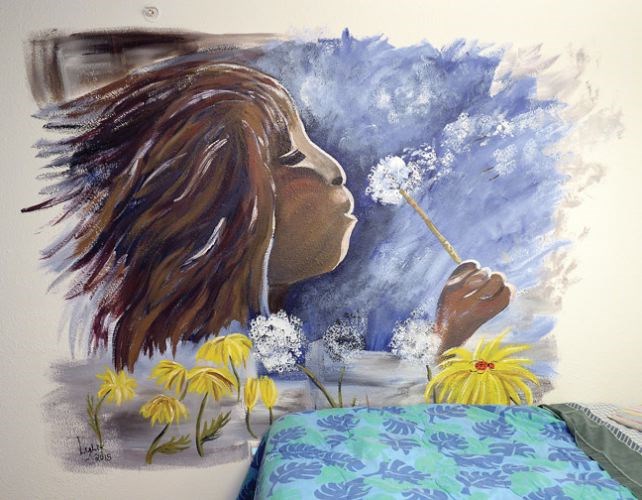Every child's room should have a mural in it to brighten the space.
When the idea came to residential care worker Bas Rynsewyn, he quickly approached Wendy Young, executive director at the Prince George and District Community Arts Council, about getting some artists to paint murals at AiMHi's Children's Residence that provides respite to caregivers of special needs children.
Four artists came forward to take on the project: Kathryn Rohl, Lynda Anderson, Lynn Box and Catherine Baylis.
The residence has eight rooms and usually there's seven children being housed at once with one bed set aside for emergency respite needs.
Rohl and Baylis each created two murals while Anderson and Box each created one.
The process began last spring and after some renovations and a fresh coat of paint was put on the walls, the murals were the next step, said Rynsewyn. Cloverdale Paint donated the paint used for the murals.
"We have one young child who is always looking at all the murals and pointing out what he sees," said Rynsewyn.
Baylis, who has been an artist all her life and usually works with acrylic on canvas and most comfortably uses pencil while mostly doing portraiture and abstracts, took on a happy cartoon character in one of her murals and a gigantic dream catcher in the other.
"I have taken some time in my later adulthood to get more serious about art," said Baylis.
Baylis recently won a Meritorious Service Medal from Canada's Governor General for her efforts to start the Fire Pit Cultural Centre when she worked for Positive Living North.
Baylis chose the dream catcher because the symbol is understood by many, she said.
"In my understanding the dream catcher originates with Anishnaabe people, which is part of my ancestry," said Baylis.
"While many of the children that come through here might not understand what the dream catcher is, the information is written on the wall beside it so the staff can help them become familiar with it. The idea that the dream catcher will catch the bad dreams in its web while the good dreams filter through to the dreamer feels kind of nice. And to make it a little bit fun I put the sleeping happy face in the middle."
Baylis has never done a mural before and the spackled wall presented some issues. It's tough trying to paint straight lines on a bumpy surface.
"It was great and I loved it," said Baylis. "The process of doing it was wonderful and I am grateful that I did it. The whole thing was Bas's idea to make these walls something more than walls for these kids. Every child should have a mural on their wall."



